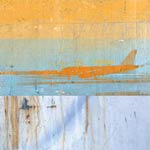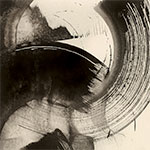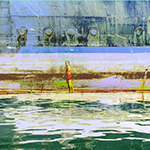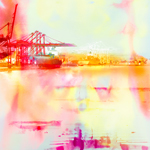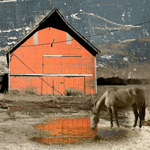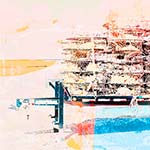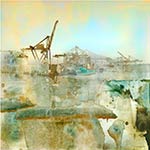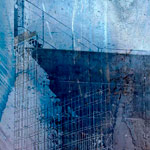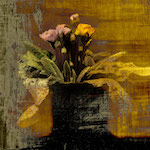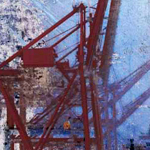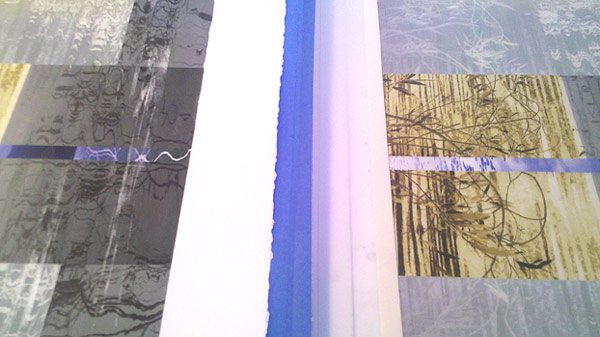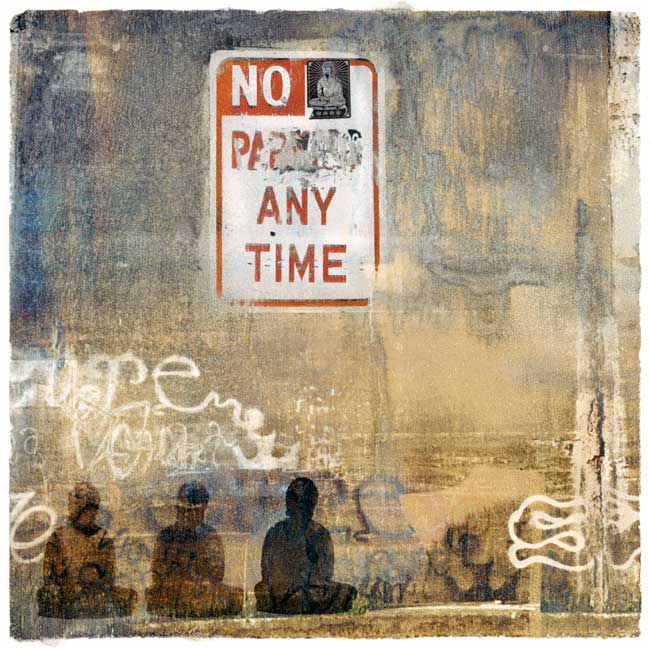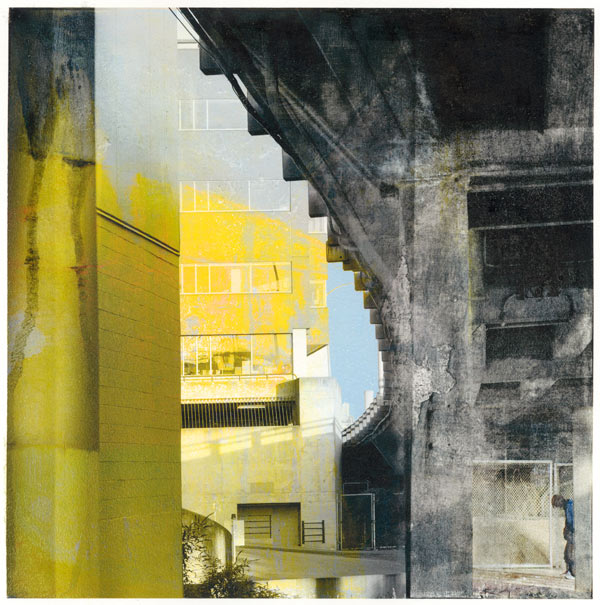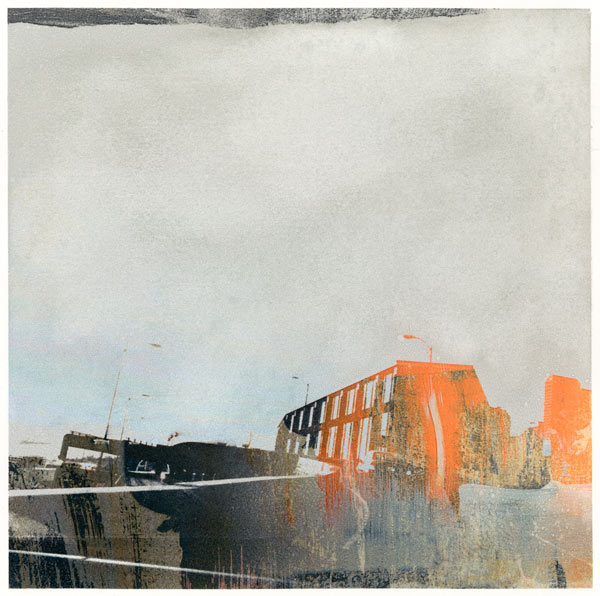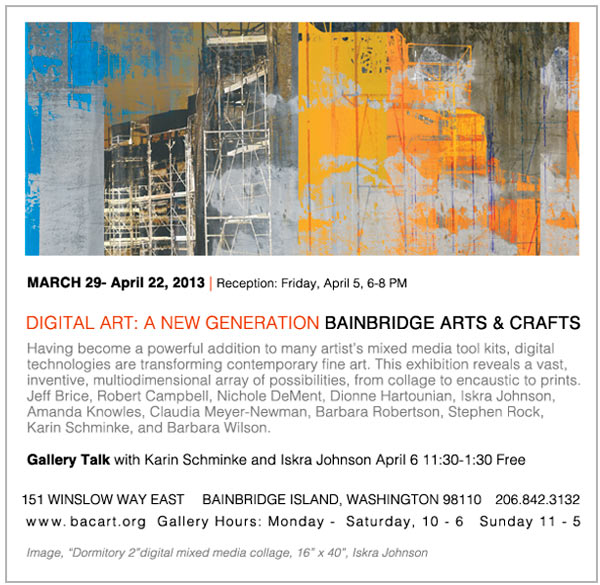In a transfer print the plate is created by printing files from a computer imaging program like Photoshop onto an acetate carrier sheet. For initial output I use an Epson 3800 with archival ink. After the carrier sheet is sprayed with a solvent the ink becomes liquified enough to transfer to paper or another surface through careful burnishing. Alternatively the plate is pressed by hand or roller onto a sheet of paper that has been soaked with gel alcohol, a solvent that transfers the ink to the paper without harming the paper’s surface. Each paper takes the ink completely differently. Soft watercolor or printmaking papers may absorb the ink with a fair amount of predictability, while others react with magical surface qualities that have a life of their own. The effects range from the dry paper-texture of letterpress to a granulation similar to aquatint or the watery translucency of traditional monoprints.
It takes a great deal of repetition and attention to detail to pull one successful print. I have learned that timing, humidity, pressure, and subtle overprinting or vandalism of the same plate multiple times can all have an effect on the image and whether it succeeds. In many ways the moment of printing is like calligraphy in its exactitude, physicality and openness to the accidents of the moment.
The photographic transfer process allows me to work with the full-color lushness of photographic reality. Like traditional printmaking there is a plate, and it is hands on, but unlike traditional processes you can print all colors at once. I’m really trying to figure out where a photograph lives in the world now. I love the luminous intensity of photography when seen on screen, but when the computer shuts off the image is gone. Photographs on paper don’t have the same back-lit radiance, and unless they are very carefully printed on fine paper, they may feel less like a “print” and more like “output.” In some ways, with the dazzling improvements in retina display, the computer monitor version of a photograph may begin to feel more like the “original” and the paper print the lesser reproduction. Our world now has trillions of images, with more being born every second, an endless stream of brilliant photographic candy flowing across our monitors and phones. The sheer volume and immediacy of images, the constant now leaves no time for absorption (or what used to be called “meaning”) and threatens to wear out our collective synapses. What can a print, a fixed piece of paper, offer in this new world?
I am interested in artifact, object, a thing of presence that arrests you, makes you pause, and puts you back in human-centered time. But I also think the human brain is being reconfigured by new technologies, and they can’t really be ignored. The way Photoshop builds images mirrors our minds and how we remember and layer experience. Photoshop also mirrors a printing press, with the ability to stack “plates” in layers, with each layer affecting the one below in truly magical ways that can only be done with this tool. What interests me is how the new media can be integrated with the old, the tactile with the digital.
The transfer process is time intensive and very sensual. Every inch of the image is transferred by the pressure of my hand as the damp paper takes the ink from the plate. It can take up to a dozen prints to get one that has just the right balance of subtle surface texture and ink density, and each print takes about an hour to completely transfer. The images layered into the final plate merge digital photographic elements, enlargements of older analog prints, and the other media I work in, such as powdered pigment and paint. It’s exciting to feel that two very different worlds can be integrated. Older ways of making are not “obsolete” — they can be revisioned and combined with the new in ways that reflect the complexity of what it is to be alive in this time.
